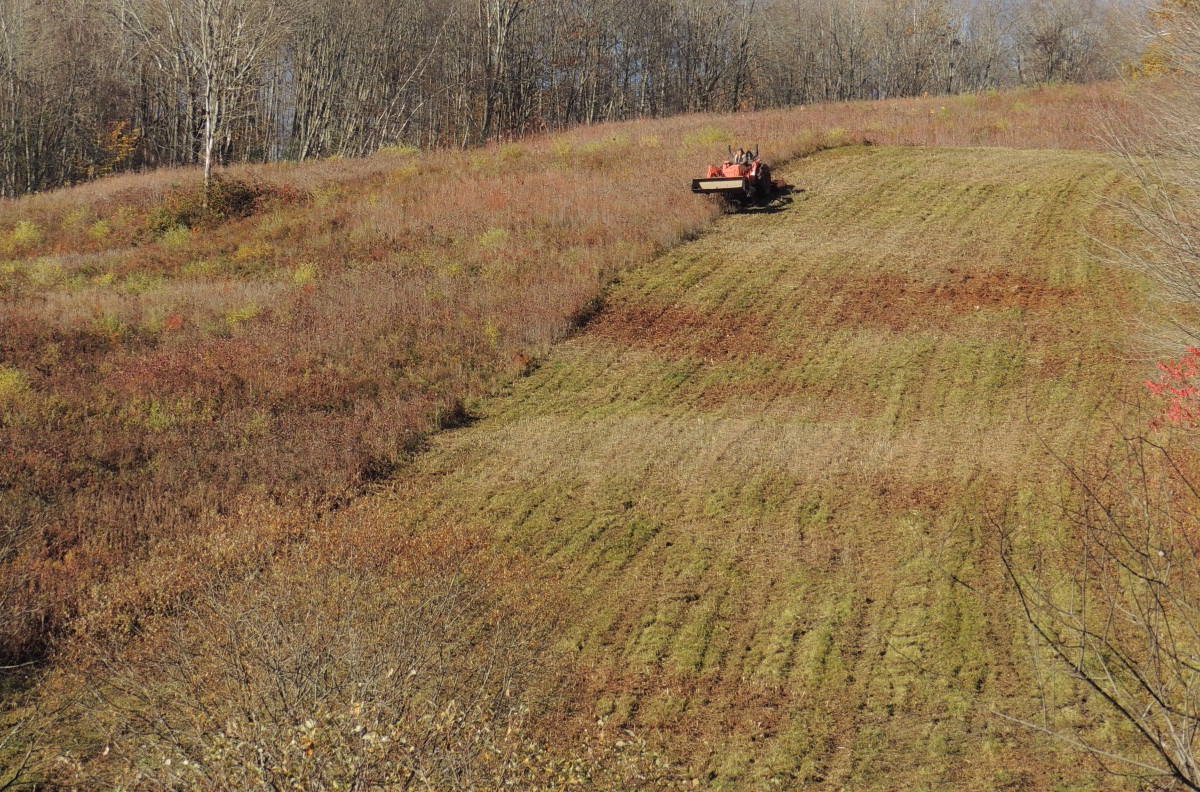It’s easy to mark the seasons here at Sheep Hill. No matter the time of year, there’s always something familiar we can count on to remind us that “Yes, the world is still turning.”
During winter, kids on sleds careen down the hill. Spring brings back the most-longed-for color: green. We hear spring, too, when the wood frogs start chuckling. At night, during summer, twinkling fireflies mirror the sky.
But what about autumn? Yes, the leaves. Red and orange and yellow, cold nights, etc., etc. All very good. That’s not the highlight, though. For just one week each fall, nothing matches the thrill of The Annual Mowing.
If you’ve ever stood atop Sheep Hill and looked down from its dizzying heights, you’ll understand. Close your eyes for a second and imagine it. The little farmhouse and Josiah’s Pond down below. Mt. Greylock in the distance, the morning sun bright in your eyes. Crisp air all around you. Now pitch straight downhill, tractor wheels churning beneath you. Feel the distinct flip-flop of your stomach…

This is how we pass the time at work this time of year. We take an extra break or two (or three) to step outside and watch Mitch, from Mountain Home Landscape, cruise confidently up and down the hill. We’ll never be lucky enough to know what it feels like to sit behind the wheel, but Mitch makes it sound pretty good. When we asked him what it’s like, he put it simply: “It is a crazy joy.”
But why do we mow Sheep Hill each year? Largely to maintain a habitat type that is in short supply: meadow. Meadows have always been a part of the landscape, but as the years pass, we lose more and more of it.
Prior to European colonization, much of New England was forested. Regular disturbance from storms, fire, and indigenous land management practices, though, ensured that meadows were always in the mix. After colonization, vast swaths of forest were cleared for agriculture; meadows and grasslands were everywhere. But in the 1800s, a great period of farm abandonment and loss began that is still underway. Modern land management practices have largely discouraged natural forms of disturbance like fire.
So here we are. Not many meadows left. So we maintain Sheep Hill as a meadow rather than let it succeed to forest because it helps promote native plants and wildlife that have fewer and fewer places to, well, exist. Our meadow is filled with goldenrod, milkweed, asters, monarch butterflies, bumble bees — the list goes on. (We actually do have a very long list at the office, if you are interested. Stop by.) Many of the species in the meadow, quite simply, aren’t forest dwellers. They need meadows. One of our goals at Rural Lands is to foster biodiversity and resiliency in the landscape — mowing is one way that we do it.
And our approach is strategic: We mow late in the year to allow pollinators as much feeding time as possible. We mow half the meadow at a time because the un-mowed section continues to provide food and shelter all winter long: seedheads for birds, cover for insects overwintering in the soil or on stems, in the thatch left from past mowings. The meadow structure, too, remains different long into next growing season — half the field is a year ahead of the rest, which brings that much more structural diversity (ie. varied food sources and places to live or spend time) to the hill.
Mitch has just about finished mowing for the year, but come check it out. See how beautiful it looks. Imagine how fun it would be to ride a tractor down the slope. Appreciate the benefits to the plants and animals of the landscape. Tap into the crazy joy of Sheep Hill.
